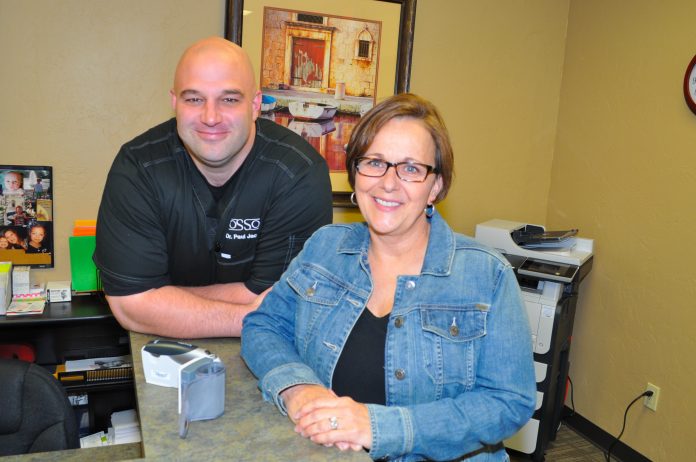
by Mike Lee, Staff Writer
Janet Burks had reached the end of her rope.
At her doctor’s office, on crutches and in pain – the 54-year-old had had enough.
“I had been going to the same orthopedist for 18 years,” Burks said, unfolding her story.
“Through those 18 years I had received over 200 shots.”
That October 2014 day, Burks finally put her foot down when it came to the excruciating pain she had lived with in her right knee.
She wasn’t exactly the front office staff’s favorite patient of the day when she declared she wasn’t moving a muscle until she was sitting in front of a surgeon.
A few calls later, that surgeon turned out to be Dr. Paul Jacob and Burks had found an answer to her prayers.
“He’s been blessed greatly by God,” Burks said of her doctor.
You see, Burks’ right knee was bone-on-bone, with no cartilage in between, and a minefield of bone spurs that had popped up over the years.
Most rainy days her knee would completely lock. When it did release you could hear the pop across the room.
Her doctor had told her she was too young for knee replacement.
Dr. Jacobs took one look at the x-rays and asked her why she had waited so long.
Surgery came days later with Jacob telling Burks he would use a new non-opioid medication.
Two hours after surgery Burks was up walking around.
She declined pain meds after surgery and was back on Jacob’s table on December 18th to get the same procedure on her left knee. She was cooking Christmas morning.
Burks now takes spin classes. She takes her bike out to Lake Hefner for rides of several miles.
“I’ve gained back those 18 years that I’ve lost,” she said. “Within one week I was up going to the store with a crutch and going to church.”
Jacob said Burks’ results are typical. He believes he is the only surgeon in the metro using this procedure. Nationally renowned hospitals such as Cleveland Clinic, Memorial Sloan Kettering and Mayo Clinic are using this new pain management approach, and Oklahoma hospitals are following their lead.
Dr. Jacob was first introduced to the procedure during his fellowship at the Cleveland Clinic.
“I had a comparison to our pain control prior to using Exparel and our pain control after using Exparel,” Jacob said. “It certainly made my life significantly easier as a fellow because I had the majority of the rounding requirements and post-op pain control.
“I started getting significantly less calls from nurses on the floor. They had much less trouble controlling patient pain and it was really a big change for me.”
Typically narcotics are administered every few hours after surgery and begin to wear off, requiring more doses. The therapy Jacob uses slowly delivers medication to the tissue over a several-day period.
“It allows you to get out of that immediate post-op incision pain and agonizing pain oftentimes you wake up with after a surgery,” Jacob said. “The majority of my post-op hip and knee replacement patients are waking up with a pain score of somewhere between zero and two and it’s staying that way for the first two days or so. It’s not uncommon for my patients to not require a single dose of opioid pain medication the first two days.
Jacob is located in Edmond just off Kelley Avenue. Soon he will move into the new Community Hospital in November.
Construction is ongoing on the new Community Hospital North-which will be located inside the new HPI Broadway Mediplex. The Mediplex is located just north of Britton Road on the Broadway Extension in north Oklahoma City.
The facility, set to open in late 2015, will provide inpatient and outpatient orthopedic, spine and women’s surgical services. Physician’s offices and a state-of-the-art imaging center will also be located in the building.
For the first time Jacob will have his patients and his surgical suite under one roof. He’ll need it Burks has anything to say about it.
“I can’t praise Dr. Jacob enough for doing this type of procedure,” Burks said. “People who know me know that I’m not going to just say that. It was a miracle that I was able to get my life back.”













